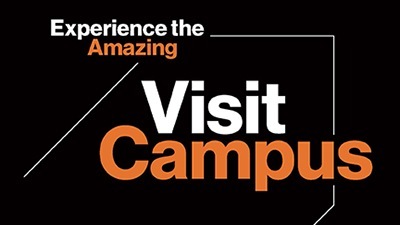Architectural and Civil Drafting Technology Associate in Occupational Studies Degree

Architectural and Civil Drafting Technology
Associate in Occupational Studies Degree
- RIT /
- National Technical Institute for the Deaf /
- Academics /
- Architectural and Civil Drafting Technology AOS
Shape skylines and cityscapes with an Architectural and Civil Drafting Technology AOS program. Design the world around you.
Overview for Architectural and Civil Drafting Technology AOS
People who work in architectural and civil drafting technology use their skills to create two- and three-dimensional drawings on the computer. These drawings are used to visually represent buildings, bridges, canals, and houses. This program is available for qualified deaf and hard of hearing students.
The associate in occupational studies (AOS) in architectural and civil drafting technology, offered by RIT's National Technical Institute for the Deaf, will prepare you for a rewarding career as a CAD technician. The program provides you with the skills to become a support technician in the architecture, engineering and construction field. You might work with architects or engineers on projects such as buildings, highways, or bridges. Construction companies and building suppliers also hire CAD technicians.
CAD operators, also called CAD technicians, take the sketches of an engineer, architect, or designer and produce a set of technical drawings. In addition to a strong emphasis on computer-aided drafting, the program provides you with a background in mathematics, building systems, construction regulations, site utilities, and materials and methods used in the architecture, engineering, and construction industries.
Graduates will enter businesses and industries that need technical employees with skills in computer aided drafting technology and a broad knowledge of applications and procedures. Graduates find work in a variety of settings, including engineering firms, government agencies, and architectural and construction firms. Positions for which graduates qualify include drafters/technicians for architectural, highway design, and civil environments.
The AOS degree in architectural and civil drafting technology prepares you to find immediate employment upon graduation.
-
First-Year Applications Due Soon
Apply by Jan. 1 for Early Decision II and by Jan. 15 for Regular Decision.
Careers and Cooperative Education
Typical Job Titles
| Drafter | Technician |
Industries
-
Civil Engineering
-
Construction
-
Government (Local, State, Federal)
-
Architecture and Planning
Cooperative Education
What’s different about an RIT education? It’s the career experience you gain by completing cooperative education and internships with top companies in every single industry. You’ll earn more than a degree. You’ll gain real-world career experience that sets you apart. It’s exposure–early and often–to a variety of professional work environments, career paths, and industries.
Students in the architectural and civil drafting technology program are required to complete a cooperative education work experience prior to graduation. You may schedule your co-op after completing your second-year academic requirements.
Curriculum for 2025-2026 for Architectural and Civil Drafting Technology AOS
Current Students: See Curriculum Requirements
Admissions and Financial Aid
For the career-focused AOS degree
- 2 years of math required
- 1 year of science required
- English language skills as evidenced by application materials determine associate degree options.
Specific English, mathematics and science requirements and other recommendations
Successful completion of a sampling experience either through the Summer Vestibule Program or an equivalent career exploration course is a prerequisite, as are the following:
- English: Placement into NENG-114 Literacies II or above. To earn the AOS degree, students must complete all necessary NENG coursework through NENG-115 Literacies III or they must place into an English course above NENG-115 Literacies III.
- Mathematics: Placement into Integrated Algebra (NMTH-212) or a higher-level course. Typically, students entering this major will have completed at least three years of high school mathematics.
- Science: Placement into Physics of Matter (NSCI-154) or a higher-level course. Typically, students entering this major will have completed at least three years of high school science. High school physics would be beneficial.
- ACT (optional): The ACT middle 50% composite score is 14-17.
Financial Aid and Scholarships
100% of all incoming first-year and transfer students receive aid.
RIT’s personalized and comprehensive financial aid program includes scholarships, grants, loans, and campus employment programs. When all these are put to work, your actual cost may be much lower than the published estimated cost of attendance.
Learn more about financial aid and scholarships
Accreditation
Contact
- Karen Beiter
- Interim Department Chair
- National Technical Institute for the Deaf
- 585‑286‑4546
- kjbndp@rit.edu
Department of Engineering Studies






